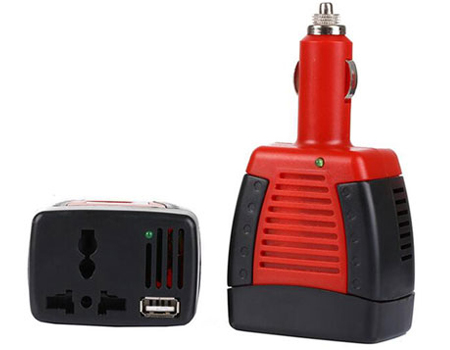The car inverter is a power converter for vehicles, which can convert the 12V DC power of the car battery into 220V AC power. The vehicle power inverter can use a 220V power supply in the car to charge laptops, mobile phones, and other devices. It can also be connected to electrical appliances within a certain power range. In the automotive field, choosing a suitable car inverter can not only facilitate the driver's daily electricity use but also ensure the steady-state power supply of automotive electronic equipment, avoiding risks such as operating failures and battery damage. Inverter.com will bring you detailed knowledge on the selection of car power inverters.
The working principle of the car power inverter
The general car battery power inverter is mainly composed of an inverter bridge, filter circuit, control circuit, oscillator, etc. Its working principle is to convert the 12V DC power provided by the car battery through high-frequency PWM (pulse width modulation) switching power supply technology. And convert the 30kHz-50kHz, 220V AC into 50Hz, 220V AC using bridge rectification, filtering, pulse width modulation, and switching power output technologies.

How to choose a right car inverter?
Choosing the right car inverter involves several considerations to ensure it meets your specific needs and operates effectively. Here’s a step-by-step guide to help you make an informed decision:
Determine power requirements
Calculate wattage needs: List all devices you plan to power simultaneously. Determine their wattage requirements, including startup surges (if applicable).
Choose inverter size: Select a power inverter for car with a continuous power rating slightly higher than your calculated total to accommodate any fluctuations or additional devices.
Consider input voltage
Check your vehicle's voltage: Most cars operate on a 12V DC system, while larger vehicles and trucks may use 24V DC. Ensure the inverter you choose matches your vehicle's voltage to avoid compatibility issues.
Type of waveform
Pure sine wave vs. Modified sine wave: Pure sine wave inverters provide clean and stable power similar to what you get from home outlets, making them suitable for sensitive electronics like laptops and medical equipment. Modified sine wave inverters are more affordable but may cause issues with certain devices.
Number and type of outlets
AC outlets: Determine how many AC outlets you need and whether you require them to be standard 120V AC or 220V AC, depending on your region and devices.
USB ports: Consider the availability and type (USB-A, USB-C) of USB ports for charging smartphones, tablets, and other USB-powered devices.
Safety features
Overload protection: Ensures the car inverter for laptop shuts down if overloaded, protecting both the inverter and your vehicle's electrical system.
Short circuit protection: Prevents damage in case of a short circuit.
Over-temperature shutdown: Automatically turns off the inverter if it overheats, preventing damage and fire hazards.
Size and installation
Physical dimensions: Ensure the automotive power inverter fits comfortably in your vehicle, considering where you plan to install it and how you'll store it when not in use.
Ease of installation: Look for inverters that are easy to connect to your vehicle’s battery or power port, with clear installation instructions.
Brand reputation and reviews
Research brands: Opt for well-known brands with a reputation for reliability, customer support, and warranty coverage.
Read reviews: Check customer reviews and feedback to gauge real-world performance, durability, and any potential issues.
Usage scenarios
Frequency of use: Consider how often you’ll use the inverter and for what purposes (e.g., occasional camping trips vs. daily use for work).
Intended applications: Ensure the inverter can handle the types of devices you plan to power, whether it’s small electronics, power tools, or appliances.
Budget considerations
Price vs. Features: Balance your budget with the features and quality you need. Avoid compromising on essential safety features or power capacity to save money.
By following these steps, you can select a car inverter that matches your power needs, fits your vehicle’s electrical system, and provides reliable performance for your devices.
